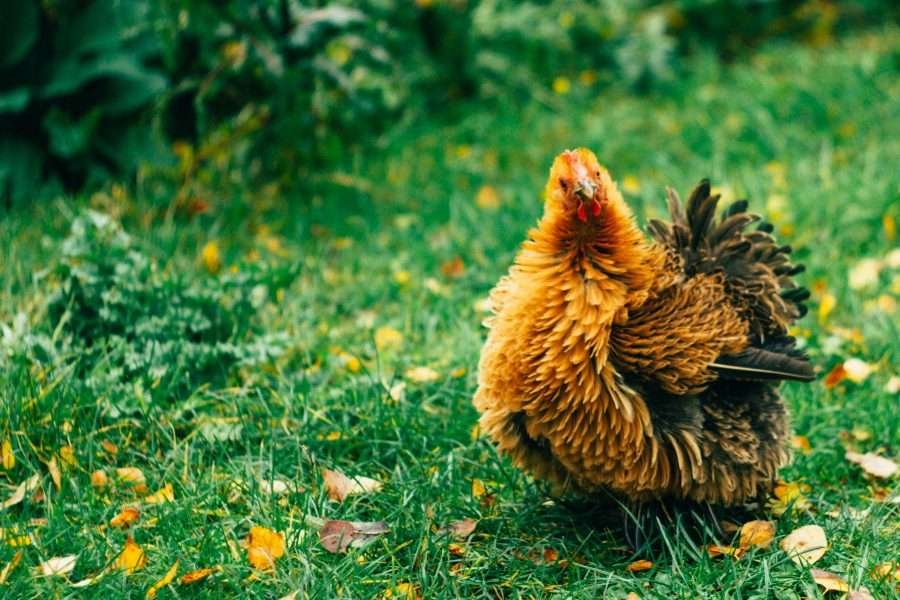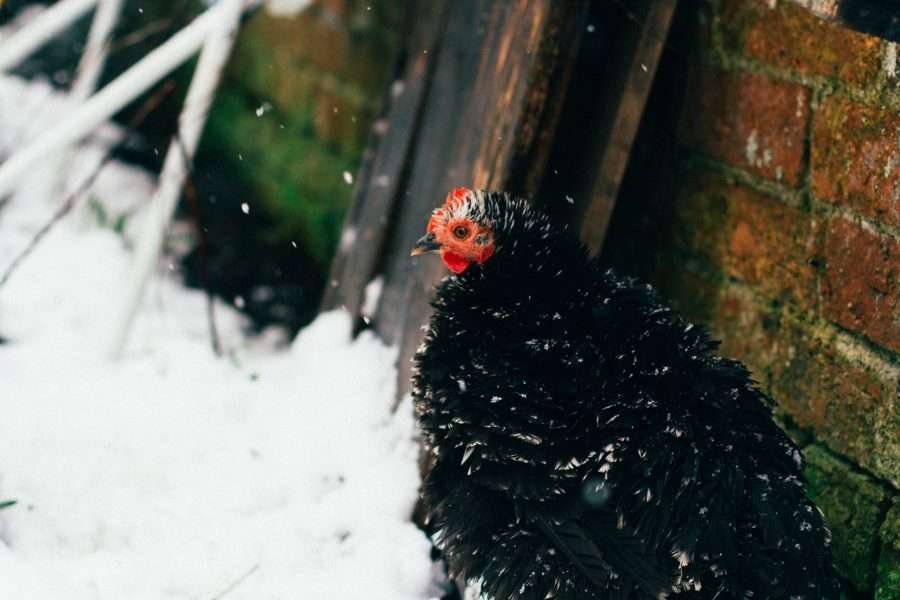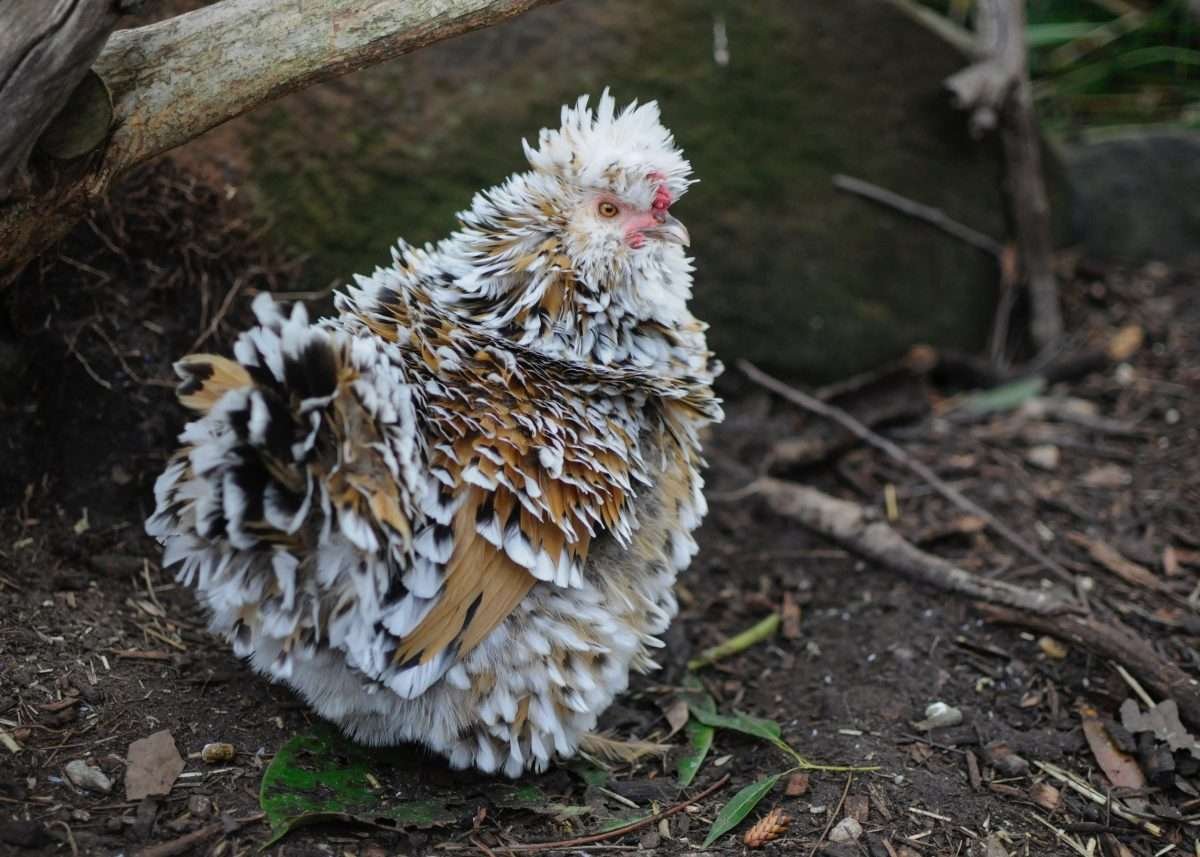To the untrained eye, frizzle chickens have the appearance of someone who has had an unfortunate blow dry, but these ladies know how to rock their unique hair do and wear it with style! Not only are they interesting to look at, they a friendly chicken who will make a great addition to your flock.

Frizzle chickens are quite the sight to behold. Whether they are adorned with buff, white, black, blue or silver-grey plumage, these girls are a curious looking hen that that always command the attention of curious passers by.
Our comprehensive and detailed overview of this breed will inform you of the characteristics of the Frizzle chicken and enable you to decide whether they are the perfect addition to your flock.
What this article covers
This is a long article, so below are some quick links. Click any of them to go straight to that section – or just carry on reading for the full guide!
Overview of Frizzle Chicken Characteristics
Pros and Cons of keeping a Frizzle Chicken
History of the Frizzle Chicken
The Appearance and Personality of a Frizzle Chicken
Egg Laying Characteristics of a Frizzle Chicken
Health Considerations for a Frizzle Chicken
Shopping list of items needed to look after a Frizzle Chicken
Overview of Frizzle Chicken Characteristics
| Lifespan | 6-8 years |
| Weight | 6-8 pounds or 2.7 – 3.6 kg (Standard size) or 1 – 1.65 pounds or 0.5 – 0.75 kg (Bantam) |
| Color | Black, black-red, brown, brown-red, red, white, buff, blue, white Columbian, cuckoo, spangled, duckwing and pyle. |
| Egg Production | <150 eggs per year |
| Egg Color | Cream or tinted |
| Broody | Not overly |
| Noisy | No |
| Suitable for hot environments | Yes |
| Suitable for cold environments | Yes, will some precautions taken |
| Suitable for wet environments | No |
| Child friendly | Yes |
| Cost of Chicken | USD $6 |
Pros and Cons of keeping Frizzle Chickens
| Pros 👍 | Cons 👎 |
| ✔ Friendly | ❌ Can be prone to getting bullied |
| ✔ Suitable for families with children | ❌ Not prolific egg layers |
| ✔ Gets on with other breeds | ❌ Feathers are delicate and can break easily |
| ✔ Unique to look at | ❌ Not suitable for very cold or very wet environments |
| ✔ Easy to handle |
History of the Frizzle Chicken
Little is know about Frizzles and their origin. The gene that causes the ‘frizzling’ of feathers is thought to have originated in Asia in the 18th Centaury. Frizzle chickens are quite common in India.
Charles Darwin classed these chickens as Frizzled or Caffie Fowls. They were seen and known in England as early as 1676.
The Frizzle chicken is officially recognised in Australia as a breed well as in nine European countries: Belgium, Czech Republic, France, Germany, Ireland, Italy, Poland, Slovakia and the United Kingdom. In the United States the Frizzle chicken is classified as a type of chicken.
The frizzling effect of the genetic mutation responsible for a chickens frizzled feathers is most often seen in Cochins in Polish hens, Plymouth Rocks and Japanese bantams. There is even a breed called the Sizzle! These hens are a cross breed of Silkies and Cochins with the frizzle gene.

The Appearance and Personality of a Frizzle Chicken
Feathers
Frizzle chickens have a have an incomplete dominant gene (F) which causes the shaft of the feather to curl upward and outward rather than grow straight like normal chickens.
This makes their feathers curled, making them look ‘frizzled’!
Frizzled birds have fluffy feathers that are moderately long. They will curl away from the chicken’s body in an upwards motion, instead of lying flat against the body as a standard hen’s would. Due to this, a frizzled chicken is unable to fly.
Colours
Frizzle chickens come in many different colours and patterns.
These include black, black-red, brown, brown-red, red, white, buff, blue, white Columbian, cuckoo, spangled, duckwing and pyle.
Appearance
Frizzle chickens have short, erect bodies with a full breast, big tail and long wings.
They have no feathers on their legs or feet and have four toes on each foot. They have yellow feet with black shading present on black/blue Frizzles.
They have a small, single comb. Their combs, wattles and ear lobes are all bright red. Their eyes are also bright red.
A Frizzle’s beak is short and yellow.
Temperament
These chickens are perfect for beginners due to their friendly and easy-going temperaments. They are not generally noisy birds so are a neighbour friendly breed.
With their calm and docile nature, they are great pets for children and are usually accommodating in their cooperation to be held and hugged.

Looking to Breed a Frizzle?
A chicken only needs one copy of the incomplete dominant F gene to have frizzled feathers.
If two copies of the gene result, the chicken will be a frazzle.
Many breeders consider it irresponsible to create Frazzles as they are very prone to health issues.
Frazzle feathers are extremely delicate and often breaking with just a touch. Because of this their feathering can be very patchy and some are almost bald.
This results in health issues such as sunburn from the UV exposure and hypothermia from getting wet and cold.
Frazzles usually do not have a long life unless they are extremely well cared for.
Chickens with the frizzle gene are categorized into three types:
- Frizzle: The chick has frizzle conformation in the feathers.
- Over frizzle: Also known as curlies or frazzles. These chicks will have extremely fragile feathers which may break at a simple touch. They can also have bald patches, and worst of all, other internal genetic problems.
- Flat: Although this chick may have the frizzle gene, they will look like a normal flat feathered chicken.
It is not possible to know which appearance category a baby chick with the gene will result in until their feathers grow out.
So what is the likelihood of breeding resulting in the categories above? We have put together this simple chart to show you the odds.
Breeding Chart
| Parents | Chicks |
|---|---|
| Normal x Frizzle | 50% frizzle + 50% normal |
| Frizzle x Frizzle | 25% normal + 50% frizzle + 25% frazzle |
Cooping Frizzle Chickens
One of the best things about keeping somewhat smaller birds like the Frizzle chicken is that you don’t need a large coop or run for them due to their typically smaller sizing, especially if they are a bantam variety.
Each Frizzle chicken should have at least 2-4 square feet of coop space inside the coop. This will give them enough room to move around and not be living on top of each other and get bullied.
Their perches should allow for six inches of space per chicken. Perches should be installed low due to their inability to fly.
It’s a good idea to install many perches within a coop area to give choice about who sits where.
Three hens for the smaller bantams can share one nesting box and this is adequate. Feel free to install more for additional comfort and moving space if the layout of the coop permits.
Like many other chicken breeds, Frizzle chickens love to forage around for bugs and seeds.
Let them free range but keep an eye on them due to predators. Because of their size and inability to fly their list of predators is larger than that of other chicken breeds.
Give them at least 4 square feet of outside space to move around and forage.

Frizzle Chicken Nutrition
You should feed Frizzle chickens high quality feed.
Chicks should be fed a 20% crumble until they are 16 weeks old. Then they can be fed a 16% layer feed of crumbles or pellets when they mature. We like this crumble feed for our chickens.
Always provide a bowl of high quality grit to aid our chickens digestion.
Always provide a waterer with clean water they can drink and easily access.
Egg Laying Characteristics of Frizzle Chickens
Frizzle hens generally lay on average around 3 eggs a week (150 per year).
Depending on whether the frizzle is a standard size or bantam size, eggs will range from regular size to small bantam eggs.
Egg coloring is cream or tinted brown.

Health Considerations for Frizzle Chickens
The Frizzle is in general a healthy chicken that is not prone to genetic ailments.
Just like other breeds they can sometimes suffer from internal and external parasites. Ensure you regularly check them for lice and mites.
One thing you should consider is that because their feathers are quite fragile, care should be taken to check for bullying or feather plucking.
Also because their feathers do not lay flat to their skin, the frizzles can have a hard time in cold or wet conditions. A bird that has been soaked with water or snow should be dried and warmed as soon as practical because otherwise it can suffer from hypothermia and possibly die from cold.
Another important consideration when buying this breed is the source or breeder where you buy them. Ensure you do your research on breeders and ensure you go to a reputable one with healthy stock.
Frizzle Chickens For Sale
Cackle Hatchery supplies and delivers over 200 varieties of chicken breeds. Check out current supplies and prices here.
Shopping list of items needed to look after Frizzle Chickens:
- Chicken coop
- Wood shavings bale
- Feeder
- Waterer
- Perch
- Nesting Box
- Layer pellets
- Chicken scratch/grain
- Shell grit
- Chicken Safe Disinfectant
- Coop cleaner
- Chicken dust
- Wormer
- Multivitamin
- Calcium supplement
- Insecticide
- Mealworms
Chicken Care Shopping List
Are you looking for a shopping list of everything you need when caring for your precious flock? We have put together an easy reference of items for your convenience.


